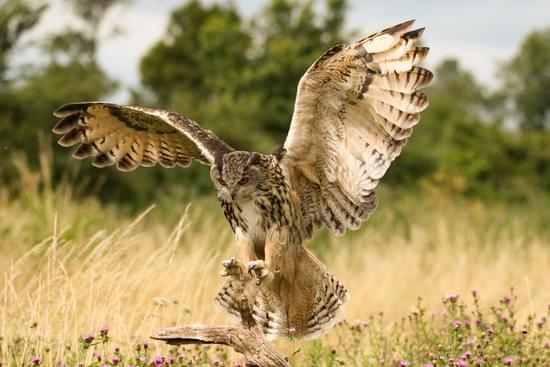




The Primer provides discussion of broad wildlife topics, plus key concepts and rules of thumb to help with trail planning and management.

This section of the handbook gives an overview of the major wildlife issues relevant to trail planners and provides examples and references for more in-depth study. If you have general questions about the interactions of wildlife and trails, the primer— which is organized around broad wildlife topics— is a good place to start.
Key concepts are presented as an introduction to each Primer topic. To make the concepts practical, Rules of Thumb are also given with each topic. The rules of thumb are intended as helpful advice for wildlife situations that are generally too complex for ironclad, universal principles.
A RULE OF THUMB IS:
1 : a method of procedure based on experience and common sense.
2 : a general principle regarded as roughly correct but not intended to be scientifically exact.
What opportunities or constraints are there for both trails and wildlife in the broader landscape?
Understanding the varieties of species and the habitats they need is essential to planning appropriate trails.
Trails affect wildlife in a range of ways. Evaluate the tradeoffs between wildlife and trails by understanding impacts as well as benefits.
Trails can be effective ways to manage visitors. An understanding of how a trail will be managed must be part of the planning process.
Sustaining Wildlife With Recreation on Public Lands
posted Nov 25, 2023
Humans and wildlife interact in multifaceted ways on public lands with both positive and negative outcomes for each group. When managed well, wildlife-based tourism and other forms of recreation can benefit conservation goals.
Environmental Impacts of Winter Recreation
posted Nov 25, 2023
Regardless of our intentions, many species perceive humans as a threat and respond accordingly. In general, animals respond to threats by first increasing vigilance (time spent looking around versus foraging), and running away if the threat is perceived to be imminent.
posted Nov 24, 2023
Winter recreation is a rapidly growing activity, and advances in technology make it possible for increasing numbers of people to access remote backcountry terrain. Increased winter recreation may lead to more frequent conflict between recreationists, as well as greater potential disturbance to wildlife.
Guidelines for Managing and Restoring Natural Plant Communities along Trails and Waterways
posted Sep 18, 2023
These guidelines are designed to assist resource managers in conducting management activities that enhance the quality of natural plant communities, wildlife habitat, regional landscape integrity and visual quality, particularly as related to planning, development, and maintenance of trails, water trails, and water access sites.
2,181 views • posted 08/05/2019